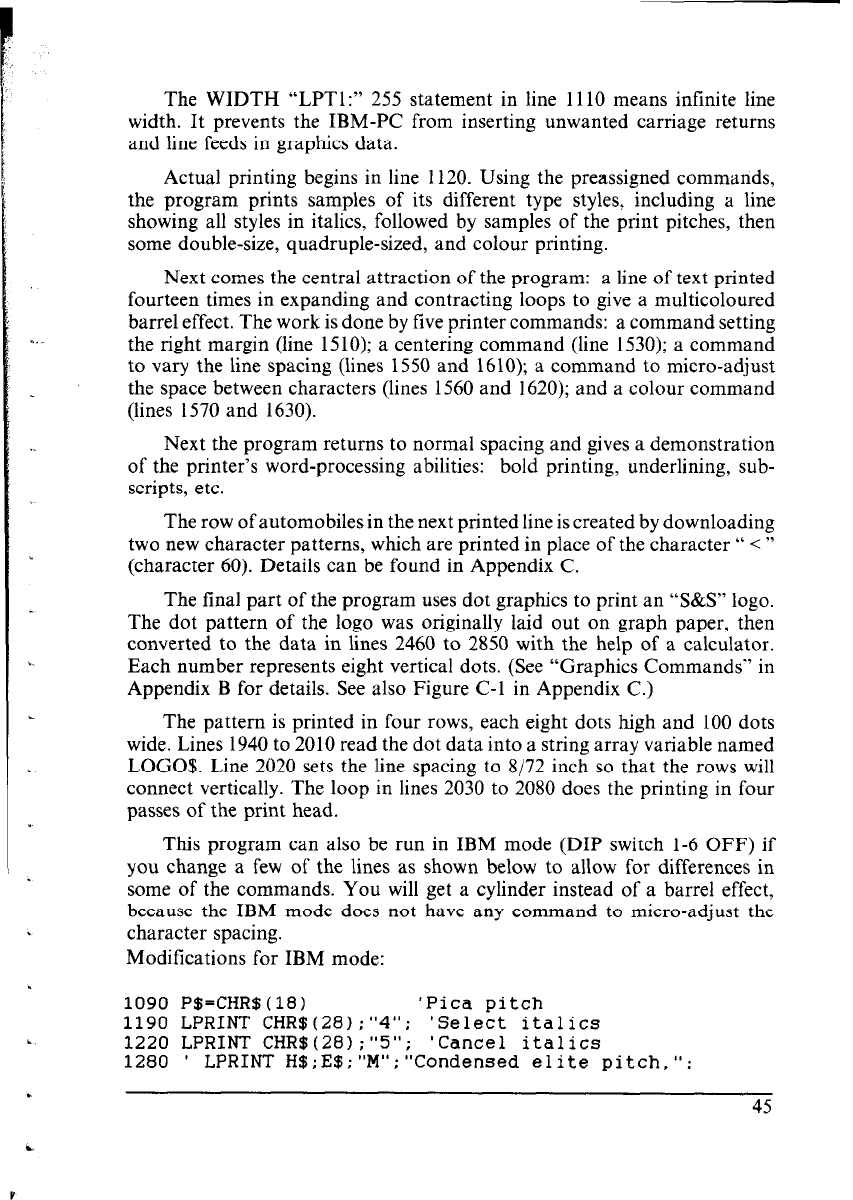
The WIDTH “LPTl:” 255 statement in line 1110 means infinite line
width. It prevents the IBM-PC from inserting unwanted carriage returns
and line feeds in graphics data.
Actual printing begins in line 1120. Using the preassigned commands,
the program prints samples of its different type styles, including a line
showing all styles in italics, followed by samples of the print pitches, then
some double-size, quadruple-sized, and colour printing.
Next comes the central attraction of the program: a line of text printed
fourteen times in expanding and contracting loops to give a multicoloured
barrel effect. The work is done by live printer commands: a command setting
the right margin (line 1510); a centering command (line 1530); a command
to vary the line spacing (lines 1550 and 1610); a command to micro-adjust
the space between characters (lines 1560 and 1620); and a colour command
(lines 1570 and 1630).
Next the program returns to normal spacing and gives a demonstration
of the printer’s word-processing abilities: bold printing, underlining, sub-
scripts, etc.
The row of automobiles in the next printed line is created by downloading
two new character patterns, which are printed in place of the character “ < ”
(character 60). Details can be found in Appendix C.
The final part of the program uses dot graphics to print an “S&S” logo.
The dot pattern of the logo was originally laid out on graph paper, then
converted to the data in lines 2460 to 2850 with the help of a calculator.
Each number represents eight vertical dots. (See “Graphics Commands” in
Appendix B for details. See also Figure C-l in Appendix C.)
The pattern is printed in four rows, each eight dots high and 100 dots
wide. Lines 1940 to 2010 read the dot data into a string array variable named
LOGO$. Line 2020 sets the line spacing to 8/72 inch so that the rows will
connect vertically. The loop in lines 2030 to 2080 does the printing in four
passes of the print head.
This program can also be run in IBM mode (DIP switch l-6 OFF) if
you change a few of the lines as shown below to allow for differences in
some of the commands. You will get a cylinder instead of a barrel effect,
because the IBM mode does not have any command to micro-adjust the
character spacing.
Modifications for IBM mode:
1090 P$=CHR$(lB)
'Pica pitch
1190 LPRINT CHR$(28);"4"; 'Select italics
1220 LPRINT CHR$(28);"5"; 'Cancel italics
1280
' LPRINT H$;E$;"M"; "Condensed elite pitch,":
45
Y


















